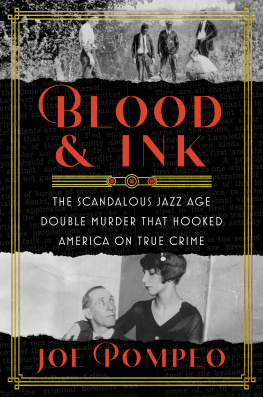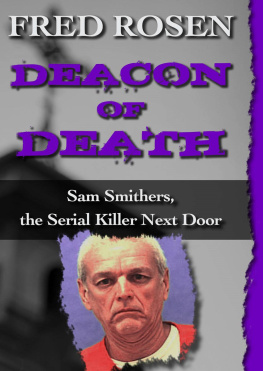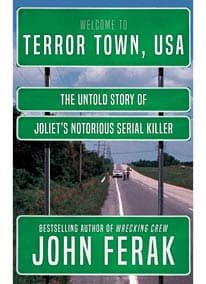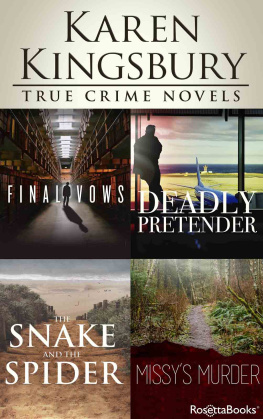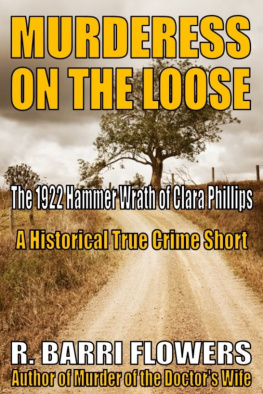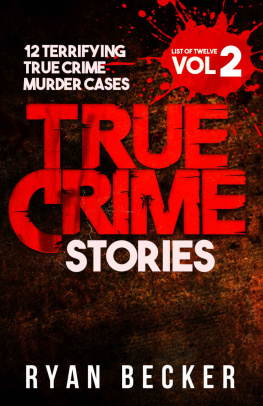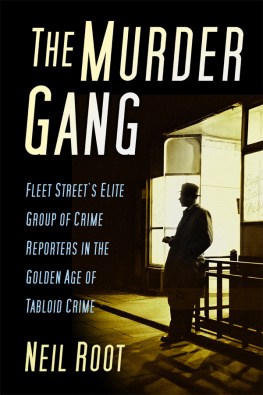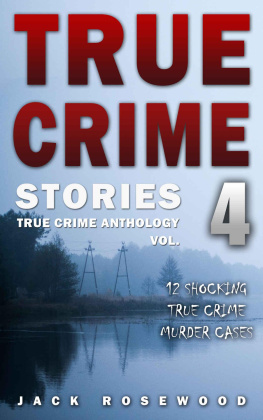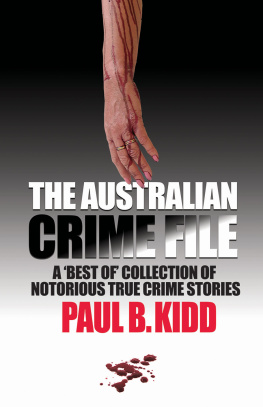For Jessanne, Ada, and Austin
Contents
O n the first day of February 2019, I stood in a small room on the third floor of the Somerset County prosecutors headquarters in Somerville, New Jersey, a quaint borough nestled in a pocket of the state where the suburbs blend into countryside. The evidence unit supervisor, Ken Pryor, had allowed me to spend the morning in his office as part of my research into this book, which chronicles a bedeviling double homicide from a century ago. The media circus of its day, set in the nearby town of New Brunswick, this hoary old mystery had long since faded from the popular imagination. Pryor was now the steward of its vestiges, the tangible ones at least.
Before I arrived, hed retrieved a stack of boxes and totes from the evidence vault. The first one I perused included autopsy reports, witness lists, fingerprints, and brooding photographs of a dusty rural road next to an abandoned farm. Thats where the victims were killed late one night, their bodies carefully arrayed beneath a crabapple tree. The dead man was a prominent local minister, married to a proud matron from an illustrious New Jersey family. Beside him lay a working-class housewife from the church choir. Their murders, shrouded in scandal and intrigue, set off a tempest of sensational newspaper coverage, fueling a circulation war between the infant tabloids of Jazz Age New York.
I spoke to Pryor about these age-old publications while riffling through files on a table. He stood up from his desk and left the room, returning minutes later with a clear plastic packet. It contained several rare editions of a bygone tabloid newspaper that led a crusade against the main suspects. The papers had been locked away in the evidence unit all these years, slowly decomposing. Bits of brittle newsprint crumbled off the edges as I carefully laid out the front pages: GRAND JURY HEARS OF CLERGYMANS TRYST! GHASTLY STORY TOLD BY FINGERPRINTS! MRS. MILLS GHOST!
After an hour or so, one of Pryors colleagues, an evidence custodian named Mike Wilder, took me to an adjoining office. Here I found the real bounty, a trove of lonely forensic antiquities neatly packed into a half dozen or so storage bins. Id become a voracious student of this crime and I suddenly held pieces of it in my hands: Handkerchiefs found at the murder scene. The star witnesss day calendar. Ancient skeleton keys. The reverends wire-rim glasses, snapped in two. I picked up a piece of shriveled sheer black fabrica pair of stockings. Wilder told me the choir singer had been wearing them when someone put three bullets in her head and opened her neck from one ear to the other. Now, here they sat in a generic suburban office building, tucked away inside a blue plastic flip-top tote that looked like it came from Home Depot.
The minister and the choir singer have been dead for a hundred years, but the themes of their sordid tale still resonate. Its a story about dark secrets upending a community. About the media and the publics interaction with scandal and crime. About class, privilege, morality, love, betrayal, power, and the collision of these forces. Its also a story about ambitiontriumphant at its best, but sometimes deadly. The beginning of the story is simple: four gunshots and two corpses. The way it ends is anything but.
I t was midmorning on Saturday, September 16, 1922, a warm but partly cloudy end-of-summer day, described in local forecasts as unsettled, when Pearl Bahmer and Ray Schneider found the bodies. Theyd rendezvoused a little before 9:00 A.M . in the city center of New Brunswick, a then-192-year-old municipality along the railway corridor between Manhattan and Philadelphia. Once a rugged patch of swampland and cedar forest, situated on a winding river that empties into the Atlantic Ocean, New Brunswick had evolved into a bustling hub of industry, home to makers of wallpaper and fruit jars, ironworks and rubber shoes, musical strings and cigars and hosiery. As Pearl and Ray walked west, away from the citys shops, restaurants, and several nouveau theaters where locals took in the latest musical revues and D. W. Griffith films, they passed the imposing headquarters of Johnson & Johnson, founded in 1886, and the courtly brick buildings of Rutgers, the State University of New Jersey, chartered by King George III a full decade before the American Revolution. After a mile or so they reached Buccleuch Park, a bucolic seventy-eight acres with a colonial mansion that once hosted George Washington. This was the brink of the countryside, farmland all around. The British had tempted Washington into battle on these plains, but his men resisted the cry of war until their rivals withdrew, destroying several farms along the way. Two centuries later, the landscape was under threat once again, soon to be replaced by paved roads and suburban sprawl. The nearest farm, known as the Phillips farm, with a barn and an unoccupied two-story house, had fallen into disuse. Pearl and Ray crossed a small brook and turned onto the adjacent road, De Russeys Lane, a barren strip of dirt between two busier arteries leading to the center of New Brunswick. De Russeys Lane happened to be a popular destination for romantic escapades, which accounted for Pearl and Rays excursion.
Pearl was a brown-eyed girl of fifteen, thin and pretty, with a coy smile and a short blond bob. Ray, twenty-three, had a chiseled face and neatly coiffed hair. He looked sharp in the photographs that would end up in the newspapers, handsome and smartly dressed in a white button-up and necktie. Ray and his wife had been separated for months; he and Pearl had been fooling around longer than that. Fooling around was very much on the agenda that morning, never mind the couples age difference.
They followed a smaller trail off De Russeys Lane, lined by strawberry patches and masses of goldenrod. Amid the thickets and tall grass, as they came upon a clearing and a crabapple tree, something caught Pearls attention.
There is a man and woman there, she said.
Ray looked over. The two people lay next to one another on their backs, silent and motionless.
Pearl, dont make any noise, Ray chided.
They snuck past and drifted into a field on the opposite side of the trail where, after they picked a secluded spot away from the snoozing couple, one thing led to another.
A short time later, reemerging on the lovers lane, Pearl felt uneasy when they passed the crabapple tree once again.
The people are still lying there, she said, lingering nervously in the brush, her pulse quickening. Goodness, they are lying the same way as when I first seen them. Go over and look at them!
Ray crept closer, with Pearl trailing behind. He circled around the pair until he stood at their feet. Pearl retreated to a nearby cedar tree as Ray studied them. Their chests didnt rise or fall. He saw blood and markings on the womans head, bullet wounds, perhaps, all but confirming Pearls suspicion: these were corpses.
R AY KNEW OF A HOUSE on the far edge of Buccleuch Park where they might be able to use the phone, but first they needed to get their stories straight. What were they supposed to tell the cops? Certainly not that they had gone to De Russeys Lane for the unseemly reason two red-blooded young people would have gone to De Russeys Lane. Ray came up with what he thought sounded like a better answer. If anyone asked, Pearl was to say, We had gone out for mushrooms. I stopped in one field and he in another.
Pearl and Ray hurried back to the main road and rang the bell of a house where a young woman named Grace Edwards answered the door. Ray caught his breath and explained what theyd seena pair of bodies across the way, a man and a woman who looked like theyd been shot. Ray appeared shaken up, like anyone that would come across two dead people, Grace thought. She gave Ray the phone.
New Brunswick twenty-seven, he told the switchboard, specifying the exchange for police headquarters. As the operator patched the call through, Rays nerves got the best of him. He tried to speak, but the words wouldnt come out. Grace took the receiver and did the talking for him.
Next page
